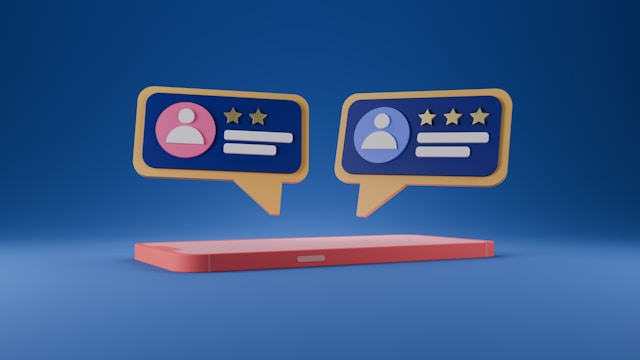In today’s dynamic marketplace, the relationship between consumers and brands has evolved from a one-way communication channel to a collaborative partnership. This shift is largely due to the rise of co-creation, a process where consumers actively participate in the development and enhancement of products and services. But what drives individuals to engage in co-creation with brands? This article delves into the science behind participation, exploring the psychological motivations and benefits that make co-creation an appealing endeavor for consumers.
Understanding Co-Creation
Co-creation refers to a collaborative strategy that integrates customers and stakeholders into the innovation process, improving productivity, reducing costs, and creating competitive advantages through unique experiences. This approach recognizes that customers possess valuable insights, needs, and preferences that can shape the direction in which products develop. By engaging customers as active participants, companies gain access to a source of diverse ideas, experiences, and knowledge, strengthening a deeper connection with their audience and creating solutions that truly resonate.
Co-creation is not a new concept. Historically, brands like LEGO have thrived by incorporating customer feedback and ideas into their product development. However, the digital age has amplified the reach and impact of co-creation. Social media platforms, user-generated content (UGC), and advanced technology have made it easier than ever for brands to collaborate with their audiences in real-time, across the globe.
Psychological Motivations Behind Co-Creation
Understanding why people love to co-create with brands requires an exploration of the psychological drivers that fuel this behavior. Here are the key motivations:
1. Sense of Ownership and Pride
When consumers contribute to the creation or customization of a product, they develop a sense of ownership and pride in the outcome. This phenomenon, known as the “IKEA effect,” suggests that individuals place higher value on products they have had a hand in creating, even if their contributions are minimal. The act of assembling or customizing fosters a personal connection, making the product more meaningful to the consumer.
2. Need for Uniqueness
Many consumers are driven by a desire to stand out and express their individuality. Co-creation allows them to tailor products to their personal preferences, resulting in unique items that reflect their identity. This customization satisfies their need for uniqueness and enhances their self-concept. In a world saturated with mass-produced goods, personalized experiences and products offer a refreshing sense of distinction.
3. Intrinsic Enjoyment and Engagement
The process of co-creation can be intrinsically enjoyable. Engaging in creative tasks stimulates positive emotions and provides a sense of accomplishment. Consumers often find the collaborative process rewarding, leading to increased satisfaction with the final product. The joy of creating, experimenting, and seeing one’s ideas come to life can be a powerful motivator.
4. Desire for Influence and Control
Consumers appreciate having a say in the products and services they use. Co-creation offers them a platform to voice their opinions and influence outcomes, fulfilling their desire for control and participation in the brand’s narrative. This sense of agency can significantly enhance their connection to the brand, fostering loyalty and advocacy.
5. Community and Social Connection
Participating in co-creation initiatives often involves interaction with like-minded individuals, fostering a sense of community. This social aspect enhances the overall experience, as consumers build relationships and share their passion with others. Whether it’s collaborating on a design, participating in a challenge, or sharing content, the communal element adds depth and meaning to the co-creation process.
The Benefits of Co-Creation for Consumers
Co-creation offers a myriad of benefits for consumers, making it an attractive proposition beyond the initial motivations:
- Enhanced Product Satisfaction: By contributing to the development process, consumers are more likely to be satisfied with the final product, as it aligns closely with their preferences and needs.
- Empowerment and Loyalty: Co-creation empowers consumers, making them feel valued and heard. This empowerment fosters brand loyalty, as consumers develop a deeper connection with the brand.
- Access to Personalized Solutions: Through co-creation, consumers can obtain products and services tailored to their specific requirements, enhancing the overall utility and enjoyment of the offering.
- Opportunities for Recognition: Many co-creation initiatives highlight and celebrate consumer contributions, providing recognition and validation. This acknowledgment can boost self-esteem and reinforce positive associations with the brand.
- Skill Development: Participating in creative processes can help consumers develop new skills or hone existing ones, from design and storytelling to problem-solving and collaboration.
The Business Case for Co-Creation
While the psychological and emotional benefits for consumers are clear, co-creation also delivers significant advantages for brands:
- Innovation and Fresh Ideas: Engaging diverse consumer perspectives can lead to innovative ideas and solutions that internal teams might overlook.
- Stronger Brand Advocacy: Consumers who co-create are more likely to become brand advocates, sharing their positive experiences with their networks and influencing others.
- Cost-Effective Marketing: User-generated content (UGC) created through co-creation initiatives serves as authentic, cost-effective marketing material that resonates with broader audiences.
- Deeper Customer Insights: Co-creation provides direct access to consumer feedback and preferences, offering valuable insights that can inform future strategies.
- Increased Engagement and Retention: Co-creation initiatives foster continuous engagement, keeping consumers connected to the brand over time.
Real-World Examples of Successful Co-Creation
Numerous brands have harnessed the power of co-creation to drive growth and deepen customer relationships:
- LEGO Ideas: LEGO allows fans to submit their own designs, with winning ideas turned into official LEGO sets. This program not only fuels creativity but also strengthens brand loyalty.
- Coca-Cola’s ‘Share a Coke’ Campaign: By personalizing bottles with popular names, Coca-Cola invited consumers to find and share bottles featuring their names or those of their friends, creating a massive wave of UGC and social media buzz.
- Nike By You: Nike’s customization platform lets customers design their own sneakers, fostering a sense of ownership and personal connection to the brand.
How BrandLens Facilitates Co-Creation
In the digital age, technology plays a crucial role in enabling and enhancing co-creation. This is where BrandLens steps in. BrandLens is a powerful video co-creation and collection platform designed to simplify the co-creation process for both brands and consumers.
Key Features of BrandLens That Support Co-Creation:
- No App Required: Unlike traditional platforms, BrandLens operates seamlessly without the need for app downloads, reducing friction and making it easy for consumers to participate.
- Customizable Camera Pages: Brands can create highly customizable camera pages with on-screen instructions, AI voice-overs, and branded elements, ensuring that user-generated content aligns with brand guidelines while allowing creative freedom.
- On-Screen Instructions: These guided templates help consumers create engaging, high-quality content effortlessly, even if they have no prior experience in video production.
- Versatile Use Cases: From brand activations and event engagements to customer testimonials and employee stories, BrandLens supports a wide range of co-creation scenarios.
- Content Control: Brands maintain complete control over the content creation process, ensuring consistency while still capturing authentic consumer voices.
Why BrandLens Makes a Difference
Unlike other platforms, BrandLens doesn’t just facilitate content collection—it powers authentic co-creation experiences. Whether it’s engaging fans at events, encouraging customers to share their stories, or enabling employees to contribute to brand narratives, BrandLens makes it easy, fun, and effective.
By tapping into the psychological motivations behind co-creation—ownership, uniqueness, enjoyment, influence, and community—BrandLens helps brands foster deeper connections with their audiences. The result is not just content, but meaningful experiences that drive loyalty, advocacy, and growth.
Final Thoughts
The science of participation reveals that consumers are motivated to co-create with brands due to intrinsic psychological drivers and the tangible benefits of involvement. Co-creation fosters a sense of ownership, allows for personal expression, satisfies the desire for influence, and builds community. For brands, it offers a powerful strategy to drive innovation, engagement, and loyalty.
With tools like BrandLens, brands can unlock the full potential of co-creation, creating experiences that resonate, content that captivates, and connections that last. In the ever-evolving landscape of consumer-brand relationships, co-creation isn’t just a trend—it’s the future.






